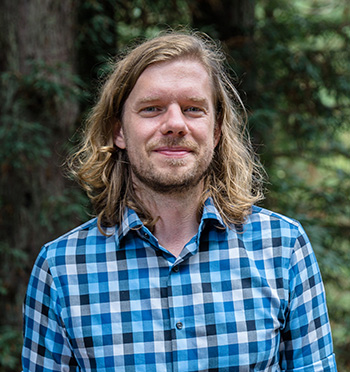Campus News
Neutron star merger observations hailed as scientific breakthrough of the year
Both Science and Physics World noted the significance of the findings in which UC Santa Cruz astronomers played a key role.

The first observations of merging neutron stars, an achievement involving UC Santa Cruz astronomers and an international team of scientists, has been recognized as the scientific breakthrough of the year for 2017 by the editors of the journal Science, as well as by Physics World magazine.
Gravitational waves from the cataclysmic merger of two neutron stars were detected in August by the Advanced Laser Interferometer Gravitational-Wave Observatory (LIGO), and astronomers around the world then raced to find the source and observe the light from the merger. A small team led by Ryan Foley, assistant professor of astronomy and astrophysics at UC Santa Cruz, located the source and captured the first images and spectra of the merger with telescopes at the Carnegie Institution’s Las Campanas Observatory in Chile (see Special Report: “Neutron stars, gravitational waves, and all the gold in the universe”).
An article in Science about the breakthrough noted: “The blast confirmed several key astrophysical models, revealed a birthplace of many heavy elements, and tested the general theory of relativity as never before. That first observation of a neutron-star merger, and the scientific bounty it revealed, is Science’s 2017 Breakthrough of the Year.”
An accompanying story in Science about early-career scientists involved in the breakthrough featured postdoctoral researcher Charles Kilpatrick, a key member of Foley’s team.
According to Physics World, the discovery of the neutron star merger “ushered in a new era of astronomy by making the first ever multimessenger observation involving gravitational waves.”